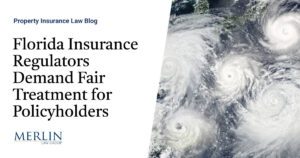Which model will Canada’s national flood insurance program follow?

After undergoing actuarial review, two possible flood insurance models are the “most promising” for private-public engagement within the upcoming national flood insurance program, a federal government official suggests.
One model involves little government intervention; the other is based on the Flood Re model in the U.K. adapted for the Canadian context with additional government intervention.
While six possible flood insurance models were originally up for review among the national flood insurance program’s task force, the following four underwent full actuarial analysis:
Flat Cap High-Risk Pool
Tiered High-Risk Pool
Public Insurer
Public Reinsurer
Among the four, the Flat Cap High-Risk Pool and the Tiered High-Risk Pool seem to stand out on top, suggests Matthew Godsoe, director of the resilience and economics integration division at Public Safety Canada during a virtual Cat IQ Connect webinar.
The Flat Cap High-Risk model is based on a pool for high-risk homeowners, with minimal government intervention in the operating of the high-risk insurance market, but with significant support from governments to bring affordability through a single, relatively low flat premium cap for high-risk properties.
“It was really looking to provide safe supports to drive affordability, but to keep the overall premium caps clearly fairly low for those high-risk properties, which actually in and of itself is a significant assistance to affordability,” says Godsoe.
The Tiered High-Risk Pool model is inspired, in part, by the Flood Re model in the U.K. and is adapted for the Canadian context with additional government intervention, versus the Flat Cap model, which proposes minimal intervention.
“It’s a private-public partnership approach where the high-risk is pooled,” Godsoe explains.
“Both [models] seem to be the most promising among the public-private engagement approaches,” Godsoe says, although he says questions around their implementation remain.
The next two approaches are more heavily focused on the public sector side, he says.
The Public Insurer model features a Crown corporation which underwrites comprehensive flood insurance through the industry as an intermediary, with an “automated government backstop.”
By contrast to the first two models which cover only high-risk properties, the Crown corporation covers all overland flood risk in Canada by intervening in the insurance market.
“This is similar to what exists in the United States through the National [Flood] Insurance Program, and here there’s an opportunity for the government to act as [the one] who’s selling, or if not selling, at least underwriting all of these high-risk insurance policies.”
The final model which underwent actuarial analysis is the Public Reinsurer model. Partially inspired by France’s Caisse centrale de reassurance, it provides a “greater degree of risk-based pricing” and builds on the previous model through a layered approach.
“So here, rather than the government playing a direct intervention role in the insurance market itself, [it is] playing more of a role in the reinsurance market,” Godsoe says.
The first layer provides the homeowner the option to purchase insurance from the private market at the full risk-based price, which must offer coverage up to a “modest” limit of $25,000. The second layer involves the mandatory purchase of flood insurance above this coverage limit up to a higher limit of $300,000 from the insurance industry.
The final piece of this process will see the task force’s findings summarized and delivered via the Statement-of-Fact (SoF) report, which will provide evidence, research and analysis of possible insurance solutions for the country.
After 18 months of work, the task force is expected to publish the SoF report this summer.
However, the ultimate decision for the program design will be within “the purview of formal federal, provincial and territorial governments,” Godsoe says.
Feature image by iStock.com/zepp1969



